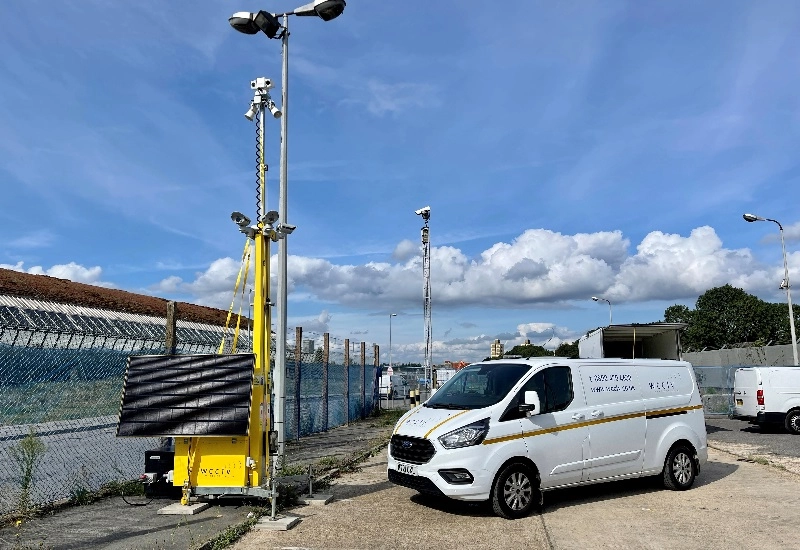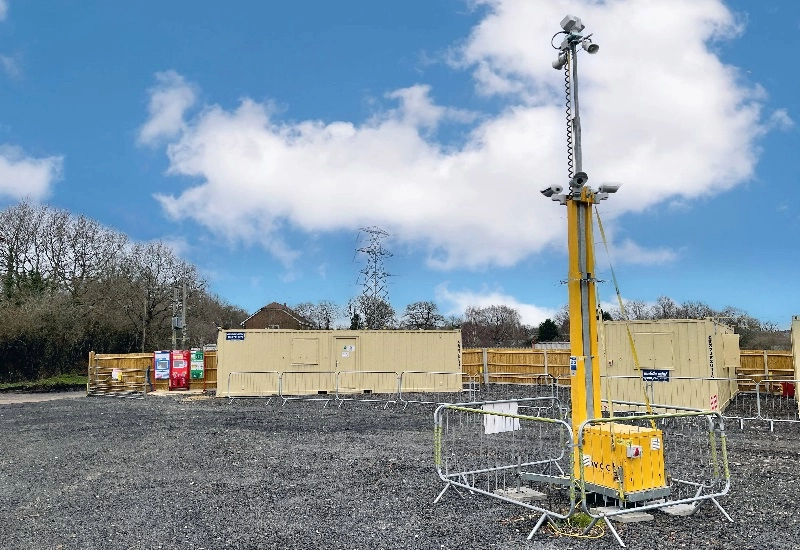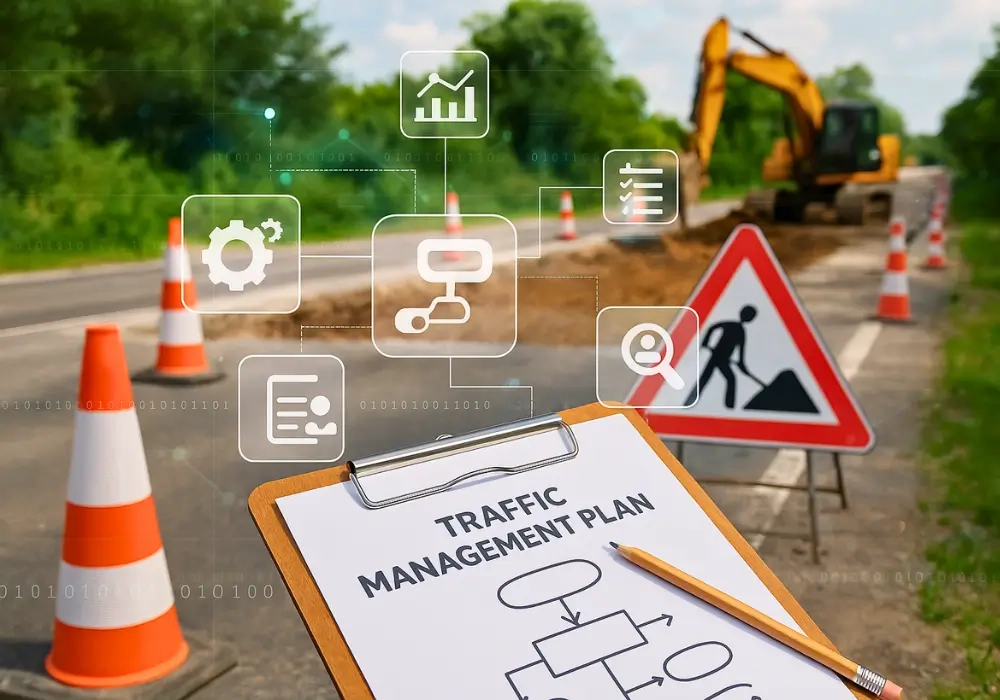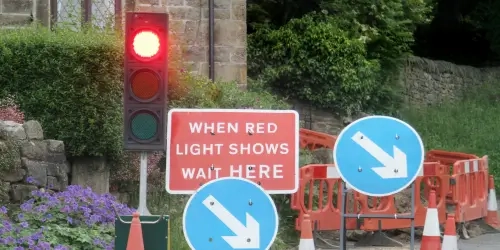Road works, construction projects and highway maintenance are ongoing necessities across the UK. Coordinating these activities safely while minimising disruption requires careful planning and strong traffic control measures.
Creating comprehensive traffic management plans (TMP) can be complex. Between regulatory compliance, risk assessments, site layouts and emergency protocols, there's a lot to consider. Without proper structure, critical elements can be overlooked.
But you don't have to start from scratch. Proven templates, strategies and digital tools help contractors and transport planners navigate Temporary Traffic Management (TTM) that protects workers, guides road users safely and meets legal requirements.
In this guide, we'll walk you through the key features of traffic management planning and show you how to build plans that work.
Why Does Traffic Management Planning Matter in The UK?
Traffic management planning is important for keeping road users and workers safe, avoiding costly delays and staying compliant with UK regulations. A well-structured plan helps maintain smooth traffic flow that reduces the risk of accidents and demonstrates due diligence for national safety standards.
When planning falls short, the consequences can be serious: vehicle collisions, worker injuries, delayed projects and reputational damage for contractors, transport planners and local authorities.
In the UK, all temporary road works and short-term lane closures (STC) must comply with the following rules and regulations:
-
Traffic Signs Regulations and General Directions (TSRGD) 2016
-
Construction (Design and Management) CDM Regulations 2015
-
National highway [GG 117] standards
Additionally, under GG 117, part of the Design Manual for Roads and Bridges (DMRB) used across England, Scotland, Wales and Northern Ireland, every traffic plan for motorways, highways and major projects must be carefully planned, implemented and monitored to ensure full compliance and public safety.
Non-compliance can result in fatalities, project delays, increased insurance costs and potential prosecution under health and safety legislation.
What's the purpose of a TMP?
-
Improves road safety by reducing risks involving workers, vehicles and road users.
-
Minimises disruption by maintaining smooth traffic flow.
-
Supports legal compliance with local and national regulations.
-
Reduces environmental impact, such as noise and air pollution.
5 Things to Include in an Effective Traffic Management Plan
Building a traffic management plan without a proper template is like constructing a house without blueprints. Here are the five key elements that belong in every professional TMP:
1. Project details
This section helps workers and the public understand what to expect throughout the project:
-
Location: Full address and affected road sections.
-
Duration: Start and end dates (including working hours).
-
Scope of work: Specific activities (resurfacing, maintenance, excavation, etc.)
-
Traffic impact/warnings: Possible effects (e.g., increased congestion, noise and dust pollution) and mitigation measures (e.g., temporary diversions, road closures).
Project details keep everyone in the loop, from workers and planners to road users (motorists, pedestrians, cyclists) and emergency services. This ensures everyone understands what's happening, when it's happening and how to navigate the area safely and efficiently.
2. Risk assessment and planning
An effective TMP includes a detailed breakdown of the site area and the type of traffic and activity that flows around it. This is compulsory for all TTM projects in the UK.
Risk assessment
Site assessments must include:
- Full site overview and configuration of working areas.
- Site-specific hazards (high-speed traffic, limited visibility, pedestrian crossings, major events, etc.)
- Identify who might be harmed (pedestrians, workers, event-goers, drivers).
- Traffic management measures to reduce these risks to "as low as reasonably practicable" (ALARP).
- Monitoring and review methods (CCTV Towers, smart detection systems, inspections, etc.)
Site assessments should be continuous throughout the project. Planners and contractors must regularly review, monitor and update conditions to address and account for any new or evolving risks as they arise.
Design planning
Design planning must show exactly how traffic will be controlled, taking traffic volumes, road layouts and project duration into account. Designs must comply with GG 104 (Safety Risk Assessment), Health and Safety at Work Act 1974 and CDM Regulations 2015, and typically include:
-
Work zone boundaries and safety zones.
-
Pedestrian walkways, crossing points and nearby intersections.
-
Vehicle routes and road closures.
-
Sign and barrier placements.
-
Access points for emergency vehicles.
These detailed drawings and/or site maps help workers understand site restrictions while guiding general road users safely through temporary traffic situations.

3. Traffic control measures
Now that you have a better understanding of the type of road risks you're dealing with, you must outline how you'll implement and manage various traffic control measures.
-
Separation: Dedicated lanes for construction vehicles vs public traffic.
-
Pedestrian routes: Safe walkways away from construction zones and falling debris.
-
Vehicle routes: Diversions and/or alternate paths that guide vehicles around hazards.
-
Speed management: Temporary speed cameras, road closure signs, Traffic Safety and Control Officer (TSCO), Vehicle Activated Signs (VAS) and/or temporary CCTV monitoring with AI-video analytics.
-
Traffic management controls: Cones, barriers, advance signs, "stop-go" controls, Vehicle Restraint Systems (VRS), Impact Protection Vehicles (IPVs) and EMCC (Enhanced Mobile Carriageway Closure) vehicles.
Effective traffic management reduces the risk of accidents and maintains smooth traffic flow through high-speed construction areas.
Read more:
- AI-Powered Detection on High-Speed Roads
- The Digital Future of TTM: From Signage to Smart Monitoring
4. Communication and emergency procedures
Clear communication prevents confusion, especially for road users travelling 50+ mph on high-speed roads. Including detailed communication and emergency protocols in your traffic management plan ensures a rapid response when emergencies and incidents occur.
Stakeholder communication
Establish protocols for:
-
Local authorities and highway teams: Give timelines for planned road closures, lane restrictions and temporary traffic diversions.
-
Emergency services: Advance notice of work zones, access routes and site-specific hazards.
-
Nearby businesses and residents: Provide expected disruptions, project duration and alternative routes.
Public notification
Keep road users updated through:
-
Advance warning signs (positioned roughly 800 metres before IPVs on motorways).
-
Intelligent Transportation Systems (ITS) and Variable Message Signs (VMS) displaying real-time traffic information.
-
Local media updates (radio, social media, council websites, etc.).
Emergency response
Define step-by-step actions for:
-
Vehicle collisions: Scene safety, emergency service contact and traffic diversion routes.
-
Worker injuries: First aid, ambulance access points and incident reporting.
-
Equipment failures: Backup control measures, contractor notification and temporary closures.
-
Severe weather: Work suspension protocols and equipment securing.
Detailed security specifications and communications keep everyone informed while ensuring rapid response and coordination when incidents occur.
5. Monitoring and incident management
Continuous monitoring keeps your traffic management plan effective throughout the entire project. And this is where technology-enabled monitoring is making a real difference.
-
24/7 CCTV coverage: Traffic Management Towers with near-360° visibility monitor entire work zones day and night.
-
AI-powered analytics: Smart detection software identifies stopped vehicles, congestion build-ups, dangerous driving, anti-social behaviour and unauthorised access in real-time.
-
Remote monitoring: Fully-managed surveillance linked to NSI Gold Accredited centres provides professional oversight and immediate response, such as live audio challenges, mobile keyholding dispatch and/or emergency service notification.
-
Smart integrations: Bolt-on integrations like ANPR (Automatic Number Plate Recognition), Body Cameras and environment monitoring sensors track vehicle movements, worker-driver interactions and site conditions (CO₂, dust, noise, weather, vibrations) in real-time. These data sources are particularly beneficial for investigations, insurance claims, internal audits and ESG reporting.
-
Centralised management: Advanced traffic management software tools, like our Stellifii cloud-based platform, provide easy access to video surveillance, environmental monitoring, system diagnostics and compliance reporting from a single interface. Stellifii enables improved oversight of traffic flow, worker safety and rapid response to incidents or changing conditions all in one place.
These GDPR-compliant technologies support GG 117 requirements for worker protection, continuous monitoring and incident logging, keeping your traffic projects fully compliant in the UK.
Read more:
- Choosing Between CCTV Towers, Redeployable Cameras & Body Cams for Your Road Project
- 10 Must-Ask Questions Before Investing in Mobile CCTV for Road Projects

Now that you understand what to include, here's a practical timeline for developing your TMP.
3 Week Strategy for Your Traffic Management Plan
Follow this systematic approach to create a comprehensive and compliant TMP in the UK:
Week 1: Conduct site assessment
Visit the roadside location to identify:
-
Traffic volumes and road types.
-
Existing infrastructure and access points.
-
Site-specific risks and hazards (gradients, curves, blind rises, etc.).
-
Pedestrian and cycle routes.
-
Environmental factors (weather, lighting).
This assessment forms the foundation of your traffic management design plan and determines which traffic control measures are required to reduce risks to "as low as reasonably practicable".
Week 1-2: Identify traffic control measures
Based on your risk assessment, determine and document which traffic management controls are best for the site:
-
Separation methods for construction vs public vehicles.
-
Speed management controls such as temporary speed cameras, Vehicle Activated Signs (VAS) and/or temporary CCTV monitoring.
-
Traffic management controls like cones, barriers, advance signs, "stop-go" controls and IPVs.
Week 2: Develop TTM plan and designs
Now that you’ve identified the key risks and control measures, it’s time to develop your TTM design plan:
-
Document all identified hazards.
-
Define control measures (barriers, speed limits, signage, etc.).
-
Specify monitoring and reporting requirements.
-
Ensure compliance with GG 104 and CDM 2015.
Accompany this information with detailed drawings/site maps showing:
-
Work zone boundaries, road closures and safety zones.
-
Pedestrian and vehicle diversion routes.
-
Signage placement at required distances (e.g., 800 metres before IVPs on motorways).
-
Emergency vehicle access points.
Week 2-3: Establish communication protocols
Next, you need to define:
-
Notification timelines for local authorities and emergency services.
-
Public communication channels (signs, websites, social media, etc.)
-
Internal team communication methods.
-
Incident reporting procedures.
-
Emergency actions for vehicle collisions, equipment failures and severe weather.
Week 3 (ongoing): Define monitoring and review processes
Lastly, you need to set up systems that ensure your traffic management plan remains effective throughout the entire project, such as:
-
Regular site inspections by Traffic Safety and Control Officers (TSCOs).
-
CCTV surveillance with AI-powered detection software.
-
24/7 professional remote monitoring.
-
Additional integrations such as ANPR, IoT environment sensors and/or Body Cameras.
-
Incident logging and database building for post-scheme review.
-
Plan adjustments based on findings.
Build Better Traffic Management Plans with WCCTV
Creating an effective traffic management plan requires the right template, proven strategies and advanced monitoring tools that actually work when things get complicated on site.
By combining structured planning processes with modern surveillance technology, contractors, planners and project managers can design TMPs that genuinely enhance safety and efficiency along our roads.
With 6 regional hubs and over 20-years of experience in wireless surveillance, we get how challenging highway safety and traffic management can be. Our Traffic Management Towers and fully-managed monitoring services deliver professional-grade protection at up to 88% less of the cost than traditional surveillance methods.
Ready to take traffic management plans to the next level with Stellifii?
FAQs
What is traffic management planning?
Traffic management planning is the process of designing and implementing safe and efficient systems to control traffic around roadworks, construction sites and/or major events.
How long does it take to create a traffic management plan?
Depending on the complexity of the project, developing an effective traffic management plan typically takes 2-3 weeks. This includes a thorough site inspection, risk assessment, layout design, communication procedures and monitoring processes.
What traffic management software is available in the UK?
Several traffic management software solutions are available in the UK, including Stellifii, our cloud-based platform. Stellfii integrates video, data, sensors and smart analytics into one connected system, providing real-time monitoring of traffic, site conditions (noise, dust, CO₂), PPE compliance and more




